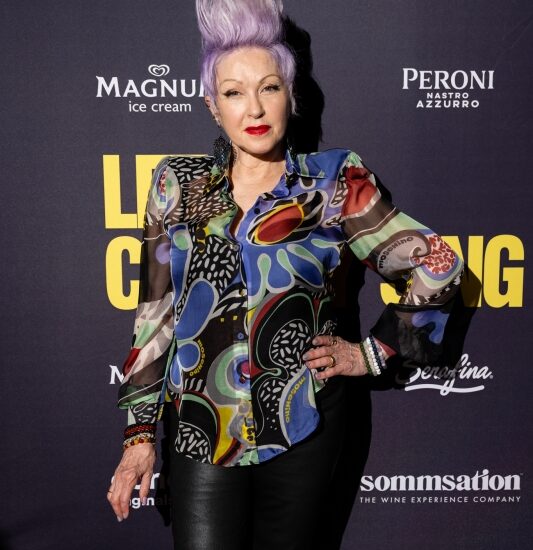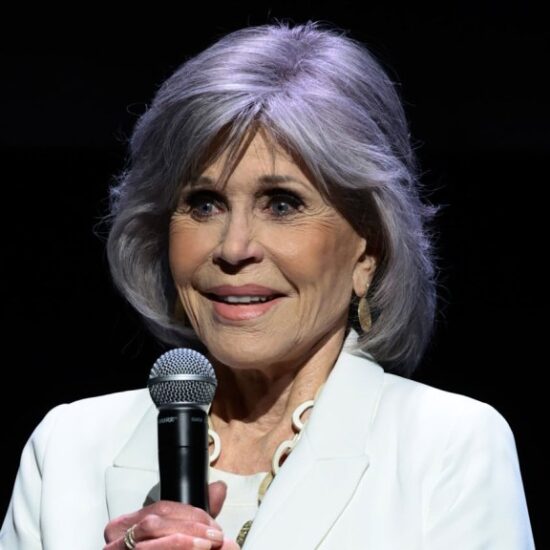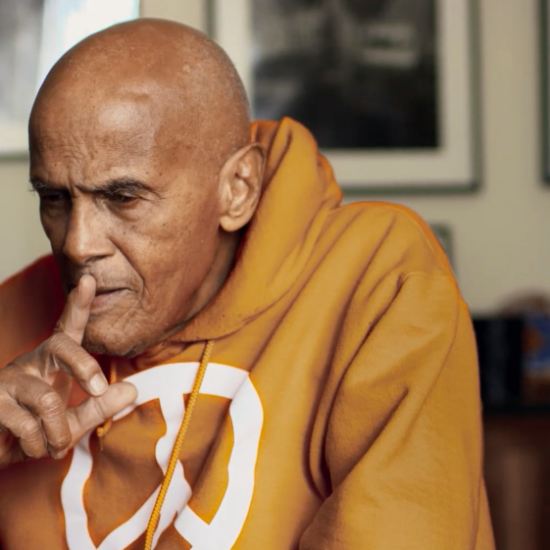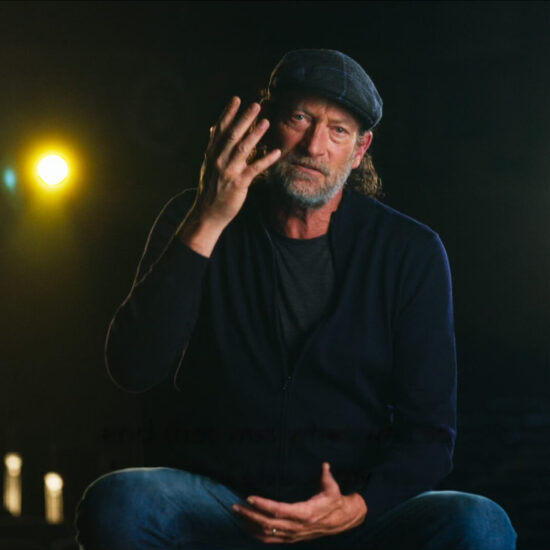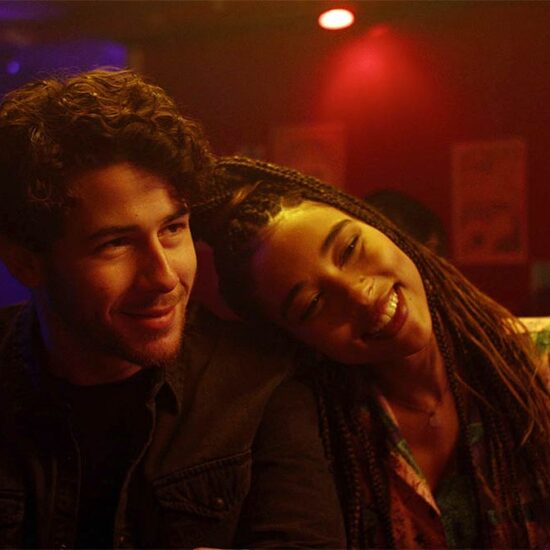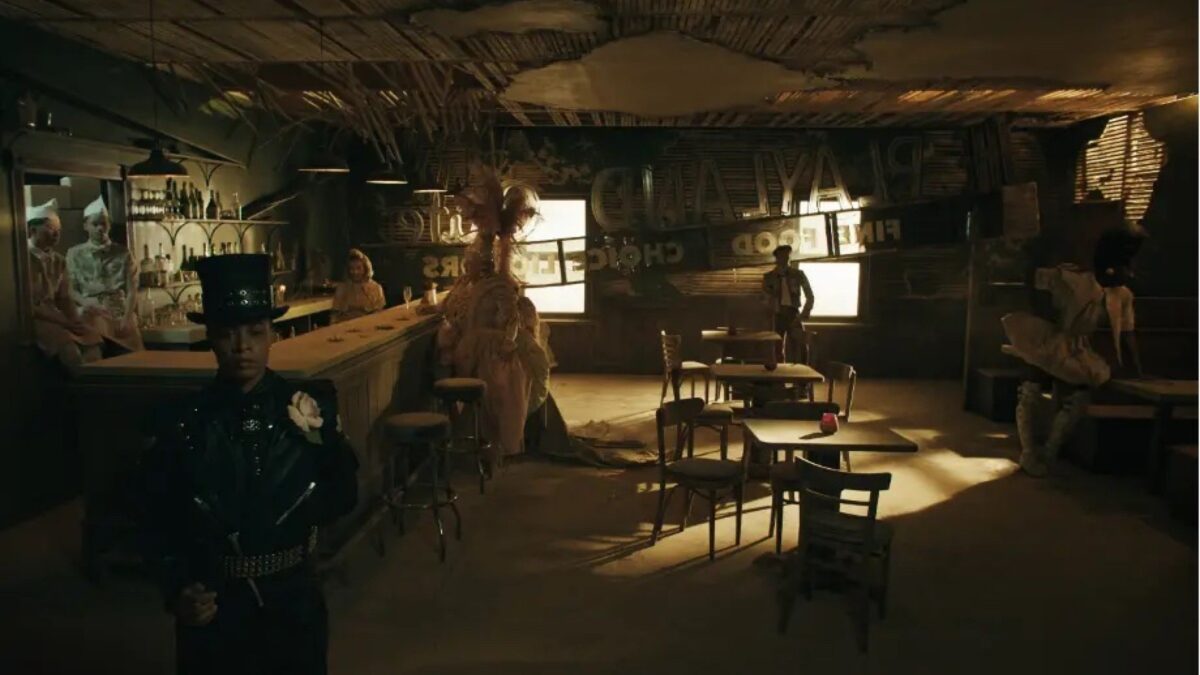
Enigmatic and subversive, Playland combines archival imagery, historical audio clips, and stylized vignettes to tell the story of what was Boston’s longest-surviving LGBTQIA+ venue and bring performers and partygoers from the 20th century out to play for one last night.
This post was written by Kylee Peña and originally appeared on Adobe blog on Jun. 9, 2023.
To produce “Playland”, Director and Co-Editor Georden West and Producer and Co-Editor Russell Sheaffer relied on Adobe Creative Cloud apps including Premiere Pro, Media Encoder, Photoshop, and InDesign to push the creative process to the limit.
Described by Variety as a “haunting and haunted collage of queer history,” the film leaps across decades, as the cast enact a journey starting in the 1940s, through the heydays of the 1960s and ’70s, to decline and closure in the 1990s. Playland echoes the filmmakers’ love for fashion, queer aesthetics, and the films of Derek Jarman, Sally Potter, and Barbara Hammer. In it, nothing stands still, and everything feels fragile and transient.
Before the film’s Tribeca Festival debut, I spoke with them about the influences and experiences that shaped Playland, and the role Adobe tools played.
Can you tell us about your experience as a filmmaker and how you got started in the industry?
West: After dropping out of an MPA program, I applied to film school. I ended up at Emerson College. While I was there, a classmate introduced me to the work of Alexander McQueen. I was enraptured by the fashion and his collaborations with photographer Nick Knight. So, while I was still pursuing my MFA in Boston, I interned at Nick Knight’s SHOWstudio in London which specializes in boundary-pushing fashion media. Nick and his team taught me as a filmmaker how it was better to get one sublime shot accomplished through meticulous on-set attention to detail rather than augmented by post-production magic.
At the time, SHOWstudio was focusing on projects around queer aesthetics. I was assigned to document Gareth Pugh’s window project at Selfridges where he invited emerging fashion designers to make something in the storefront. Edwin Mohney (Costume Designer on Playland) was the artist there that day. Using red duct tape, they created a piece that nestled in the liminal space between a tableau vivant, sculpture, and garment.
After I returned from London, I shot my graduate short, “Patron Saint”, featuring the designs of Jamall Osterholm. It went on to premiere at Outfest and won gold at the Student Academy Awards. I knew I wanted my first feature film to be focused on queer history. In 2019, I started doing research at a local archive, The History Project, in Boston. This archive, one of the largest independent LGBTQIA+ archives in the nation, was around the corner from the gay bar where I was working as a server. What started out as a research project blossomed into a script speculating on the archival silence that defines so many queer historical records — erased, redacted, forgotten. In 2020, once I felt like it was ready to share, the first person I called was Edwin.
Sheaffer: I’ve always found myself situated somewhere between filmmaking and film theory and my journey as an artist and thinker is bound up in the space between the two. I started college in UC Irvine’s Film & Media Studies program and got my first job in the industry right after graduation as an intern-turned-assistant editor on Jennifer Arnold’s “A Small Act” (which premiered at Sundance in 2010). Jen was so generous and gracious with me. We worked together for years after “A Small Act”, first on “Glee: The 3D Concert Movie ” (where I was a field producer) and then on ESPN’s “The Diplomat” (where I was an associate producer). I undoubtedly owe my grasp of three act structure to her mentorship.
I then went to grad school, earning an MA from NYU’s Cinema Studies department and a Ph.D. in Communication & Culture from Indiana University. My time in grad school was a revelation. The faculty at both institutions allowed me to fuse my interest in film scholarship with moving image making. I made some of my first films while at NYU, two of which ended up at galleries and events run by the MoMA (one of which was reviewed by Roberta Smith in the New York Times). While at IU, a short direct-animated film of mine premiered at Tribeca.
I’m now based in San Diego and find myself gravitating towards filmmakers who, like me, are exploring the intersections of embodiment, sexuality, and cinematic language. It’s a real joy to get to imagine how and why a film is going to speak in a certain way with directors who are so open to reimagining how a scene, an act, or a film might move through time.
Credit: ‘Playland’/Georden West, Russell Sheaffer
How and where did you first learn to edit?
West: I started to edit because I wanted to make films. There was never a world for me in which the edit was not part of this. I have never not edited my own work.
I didn’t have a camera, so I would shoot videos with my little brothers in our neighborhood on my cell phone or using the Photo Booth application on my laptop. Then I would spend weeks editing it in iMovie. Weeks.
In college, maybe this will age me (but I swear our tech was just out-of-date), I first shot on miniDVs. The small school I went to for undergrad had these little JVC cameras that recorded to tape. Then (after you transferred it to digital using a deck), we would edit in Premiere. We got a brief 101 session on the software and then were left to our own devices.
Sheaffer: I took a filmmaking class in high school decades ago. In that class, we had access to a handful of Canon miniDV cameras and iMacs with Final Cut Pro. Every time I’d have a question about how to do something, my teacher would tell me to go online and figure it out — so I did. I treated the bulk of the class time like an experiment in editing.
When the Final Cut interface was redesigned (we were in the middle of the edit on “Glee: The 3D Concert Movie” at the time), I moved to Adobe Premiere and haven’t looked back. Now, I revel in knowledge about codecs and am constantly trying to absorb new workflows. I still push the program until it bends, accommodating unconventional approaches and needs.
How do you begin a project/set up your workspace?
West: The studio is always a place of execution. I will test concepts there, but it isn’t a place I tend to relax in. It is a bit like artwork purgatory. I think these spaces are too transitory for me to develop a close social and spatial relationship.
During post, if I have to go to a professional space, I tend to consistently use the same edit bay. It helps me start to transform the space into something closer to the personal. The software at this point feels pretty comforting.
I was lucky to cut “Playland” while in residence at the Fine Arts Work Center in Provincetown, Massachusetts. I struggled at first to edit in the darkroom where the computer was, but during a Covid outbreak, I brought the hardware into my apartment. That really was a turning point for the process.
Sheaffer: Because so many projects I work on feel a bit like collage, my first step is to conform all media to a single format. Once I do that, I like to make low-res proxy files that I can take on a travel drive with me. I’m working off of a 16-inch MacBook Pro (64GB of memory and an AMD Radeon Pro 5500M 8GB graphics card). While I love working from my office, I want to be able to wander with my system.
I find that my editorial headspace requires shifting physical locations. I want to take my edit station to the park, to the dinner table, to the woods, and to the middle of the High Desert. Knowing that about myself, having high-speed travel drives with media that can be cleaned up and onlined later is a vital part of the setup process.

Credit: ‘Playland/Georden West, Russell Sheaffer
Tell us about a favorite scene or moment from this project and why it stands out to you.
West: I don’t think I have a favorite moment, but I am most proud of the timing in the film. We had beautiful raw material to work with and getting to massage the shots (montage and sometimes even in-shot) to get the rhythm of the film to a place that felt “right” is something I can appreciate when I rewatch “Playland”. There are just some cuts (Tex clicking a remote control, which throws us into the darkness of the club with DJ Hella) that still tickle me.
Sheaffer: The moment that stands out to me is when we first see Hella enter the space of the Playland Café. In the shot, Hella is entering across time, carrying a crate of records. Georden had assembled a temp version of the shot using a roster of mattes and keyframes so that Hella fades into the frame as she walks through the doorway and around two other characters who are rooted in their respective times. I spent days working back through the timing on that opacity shift, mapping the curves of each character’s garment. The result is a shot that communicates so much about these characters and their relationship to the space without necessitating a cut.
What were some specific post-production challenges you faced that were unique to your project? How did you go about solving them?
West: Oof. It was a pandemic. I had great support from independent film production company, Artless Media, who were as determined as I was to get “Playland” made.
I understood that time was not going to be on our side for the actual production. I spent pre-production crafting a shared vision with Kristen Dempsey (Production Designer), Edwin Mohney (Costume Designer), Jo Jo Lam (Cinematographer), and Aaron Michael Smith (Composer). We worked hard to have a really solid understanding of what we wanted the film to look, feel, and sound like. I have no doubt being in conversation with these extraordinary artists ahead of the shoot really elevated “Playland”.
Then we shot in only eight days. I think this speaks to the incredible talent and determination of the crew, particularly to the leadership of these department heads.
Sheaffer: We had the initial intention of making “Playland” a stitched-together, single-shot piece. But, shooting during the pandemic with only eight shoot days, it became clear quickly that it would be impossible to make that style manifest. A lot of the challenge for Georden and me was to re-discover the timing and syntax of the film in the edit. Georden and I passed cuts back and forth over the course of eight months, slowly developing the rich and unique grammar that is so palpable in the film now.
What Adobe tools did you use on this project and why did you originally choose them? Why were they the best choice for this project?
West: I used Premiere, Media Encoder, Photoshop, and InDesign. Adobe’s offerings encompass all the tools I could possibly need to make “Playland”. Adobe files talk to one another, so the workflow is smooth from one tool to the next. We also needed software where we could set concepts for sound design. The aural landscape is a vital part of the edit. Just as visual elements can demand a specific sonic element, this relationship works the other way around. Premiere is perfect for doing a little bit of everything!
Sheaffer: Adobe Creative Cloud is what I’ve been using for years now, and I feel very comfortable experimenting and pushing it to its limit. The fact that the apps all communicate with one another was also vital. I could run encodes in Media Encoder while continuing to edit in Premiere, pulling in graphics and visuals that Georden had made in Photoshop and InDesign. The kind of flexibility that is inherent to Premiere was also key — we relied heavily on Premiere’s keyframe, matte, and time remapping tools.

Adobe Premiere Pro workspaceCredit: Georden West, Russell Sheaffer
If you could share one tip about Premiere Pro, what would it be?
West: Play. I have discovered so much about what a piece of footage can do by investing time in playing. I think we, as a society, demand artists be experts, but I would rather be a risk-taking amateur! Premiere really gives an editor the ability to try new things and you can push the software far. I sneakily use a lot of the effects and keyframing tools.
For me, as a creative who directs and edits, your on-set experience must be completely divorced from the edit. Every shot deserves the scrutiny of an editor without a director’s preciousness. If there is something you don’t like about a shot, but you feel like you must use it, taking the time to really see what is possible in Premiere before throwing it away OR using it as is, is always an option. I am not of the “fix it in post” approach: I want to do my best possible work on set and then have material that just needs tweaks in the edit, so I have time to really perfect the material.
Sheaffer: In the words of some of my five-year-old’s favorite books: “Experiment! Invent!” Premiere’s interface is such a valuable tool because you can bend it to what you need. Don’t feel like you have to follow all of the (formal or technical) rules in your offline edit. There are hundreds of ways to achieve a similar look or effect, and Premiere is the perfect place to learn, grow, and play until you find what you need. With that said, though, I’ve also experienced first-hand that you need to leave yourself ample time for clean-up when you start to online your edit.
Who is your creative inspiration and why?
West: I am inspired by all queer folx creating a world more survivable for themselves. Also, the “Playland” team. I learn so much from the artists I work with and am grateful to call the visionaries that gave their time and talent to this film some of my greatest influences. Influence is very local.
Sheaffer: I’m a devotee of Barbara Hammer, Derek Jarman, and Sally Potter. All three artists are playful in their form while simultaneously taking the time to understand the why of each film’s style. And they have all made beautiful and unique cinematic visions as a result.
What’s the toughest thing you’ve had to face in your career and how did you overcome it? What advice do you have for aspiring filmmakers or content creators?
West: I don’t really like answering the first question because it links the merit or value of a practice to a suffering that is commodifiable and palatable. No artist should have to plate their vulnerability or hardship to a company for career advancement.
As for the second: if you’ve never seen yourself reflected in the specific artform you’re practicing, you know your work is inherently vital and valuable. That is reason enough to create whatever you have decided to make.
Sheaffer: I think the most important thing for any artist is to continually surprise themselves with what they don’t know. While I love conventional narrative films — and editing in familiar modes is satisfying in its own way — I also want to challenge myself to learn through my artmaking. When I teach, I try to encourage my students to reach beyond their own technical limitations while grounding themselves in what they know. Don’t feel like you’re limited by your own current know-how but do know that your own unique subject position is the most valuable tool that you have.
Share a photo of where you work. What’s your favorite thing about your workspace and why?

Credit: Georden West

Credit: Georden West
West: I edited the film while a resident at the Fine Arts Work Center in Provincetown, Mass. There was a Covid outbreak, and I ended up catching it. To meet my deadlines, I moved my workspace into the studio apartment so I could keep working without getting anyone else sick. Even after I recovered, I had gotten so used to editing in the comfort of my own personal space (I am a big believer in artistic utility) that I didn’t move back to the darkroom I was previously editing in.
I loved the white walls and the paneled Cape Cod style of the space. There were large windows that opened up into a beautiful greenspace behind the apartment. Fortunately, AND unfortunately, it meant light was bouncing around every which way. I would regularly go under a blanket to see what I was doing.

Credit: Russell Sheaffer
Sheaffer: My favorite thing about my workspace is that it can be mobile. I love sitting down at a proper edit bay, but I also know how important changes in physical space are for my own creative manifestation. In this photo, I was on a writing and editing retreat in the middle of Twentynine Palms, CA — isolated and able to freshly visualize with the help of the land, sun, and sky!
Monica has a BA in Journalism and English from the University of Massachusetts and an MS in Journalism and Communications from Quinnipiac University. Monica has worked as a journalist for over 20 years covering all things entertainment. She has covered everything from San Diego Comic-Con, The SAG Awards, Academy Awards, and more. Monica has been published in Variety, Swagger Magazine, Emmy Magazine, CNN, AP, Hidden Remote, and more. For the past 10 years, she has added PR and marketing to her list of talents as the president of Prime Entertainment Publicity, LLC. Monica is ready for anything and is proudly obsessed with pop culture.








